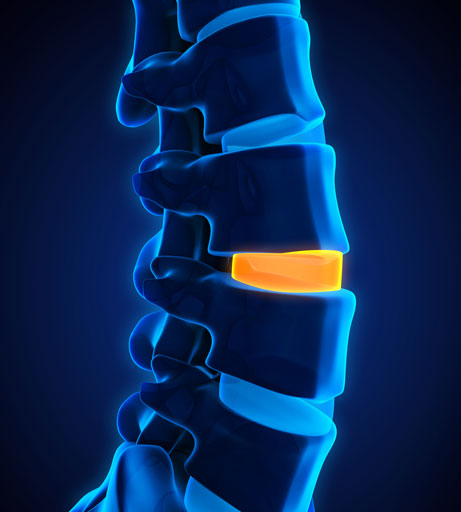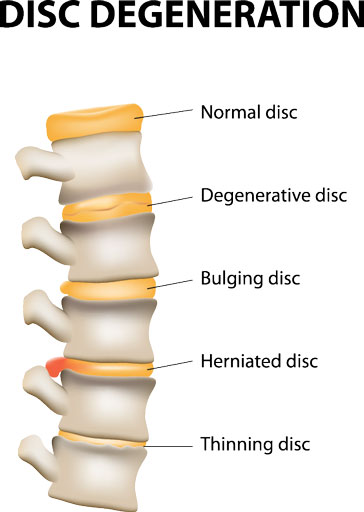
What is Disc Displacement?
When it comes to back pain, there are many causes. A very common cause is disc displacement and radiculopathy (or pinched nerve). Back pain can be a nightmare and can last a very long time. If you are unfortunately dealing with chronic back pain, you know firsthand the difficulties and challenges it creates.
In the back, pain occurs with disc displacement because the soft disc that lies between the vertebrae of your spine is pushed out of place. In the center of the spinal disc is the nucleus, which contains a jelly-like material that provides a cushioning effect for the vertebrae. It helps the vertebrae stay stacked. As you age, the discs can rupture or degenerate. This means they lose their cushioning ability and often times the jelly-like substance will get displaced from the weakened area of the disc, causing pressure and irritation of the nerves in the spinal cord. The pressure and irritation can then lead to pain and numbness in your arm or leg.
Most of the time, disc displacement occurs in your lumbar spine. The lumbar spine is your lower back area. Sometimes the pain can also occur in your cervical spine or neck area. Disc displacement and resulting radiculopathy (pinched nerve) often cause chronic and excruciating back pain that requires treatment from a pain management specialist. Fortunately, the pain caused by disc displacement and radiculopathy can often be abated with proper treatment.
What is Disc Bulge?
Disc Bulges are another serious disc displacement ailment. As we age, the discs in your vertebrae tend to dry out. The nucleus becomes smaller and the disc loses height internally. Because the walls of the disc stay the same length, the walls tend to “bulge” when the disc loses height and the vertebrae approach each other. These “disc bulges” are often seen on MRI and do not produce pain. When there is a disc bulge, the walls of the disc are normal.
What is Disc Protrusion / Herniation?
If part of the nucleus shoots through the wall of the disc, it is called a protrusion or herniation. The nuclear material can cause irritation and inflammation of the nerves that are nearby. This nerve irritation causes pain to be produced in your upper limb, torso, or lower limb, depending on what nerves are inflamed. When there is a disc protrusion or herniation, the wall of the disc is weakened. The disc abnormalities are also readily seen on MRI.
Are there Disc Displacement Treatments?
Yes! Treatments for disc displacement can come in many different forms. All treatments will depend on the cause and location of your injury.
For disc bulge, simple stretchability exercises and physical therapy may provide you relief. In more serious cases, modalities such as physical traction, injections, radio-frequency ablation, or a combination of these treatments may be necessary to relieve the amount of pain you are experiencing. When we approach pain management at Summa Pain Care, we strive to reduce or completely eliminate the amount of pain medications you are taking.
When you have a disc protrusion and nerve irritation, the nerve can be affected and not work as well as normal. You may be experiencing weakness or numbness. Generally, steroids by mouth or by injection are used to reduce symptoms if the pain is severe enough. Pain medications, NSAIDs like ibuprofen or naproxen, or other agents can be used for various symptoms. When you combine physical therapy into your treatment plan, the need for medications should be greatly reduced. Physical therapy exercises and modalities can be started after the pain has eased.

Prevention
The evaluation of your pain needs to answer questions usually ignored: Why? Why was there a protrusion on one side and not the other? Why was there a protrusion at one level and not another? The answers to these questions are critically important to prevent recurrence and chronic pain. Only then can we assess how to further prevent the type of pain you are experiencing.
Final Thoughts
The goal of any pain management treatment should focus on finding the least invasive procedures that will provide relief from the pain you are experiencing and allow you to return to your normal routine. A pain management doctor at Summa Pain Care can help determine the best course of treatment for your condition. For more information about disc displacement and other painful conditions, or to learn more about the courses of treatment available at Summa Pain Care, call (623)776-8686 today.
Comments are closed.
